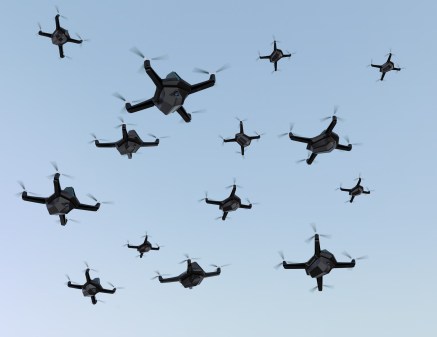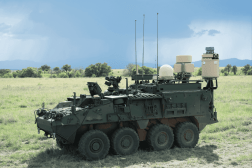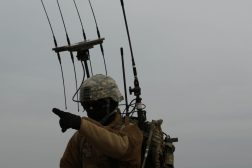Army activates third multi-domain task force

The Army officially created a third Multi-Domain Task Force on Friday, the second such organization located in the Pacific theater where Pentagon leaders view China as a top threat.
These units are designed to be in constant contact with adversaries during the so-called competition phase of conflict. They are capable of deep sensing and long-range precision fires. The so-called backbone of these task forces are their Multi-Domain Effects Battalions, formerly called I2CEWS because they include intelligence, information, cyber, electronic warfare and space capabilities and personnel.
The first MDTF is also located in the Pacific with the second in Europe. With the creation of another MDTF under U.S. Indo-Pacific Command, the Army is making clear China remains the pacing threat.
“We think that’s significant because … it clearly shows the prioritization that the Department of Army is placing on the Indo-Pacom theater by giving this theater a second MDTF,” Lt. Gen. James Jarrard, deputy commanding general of Army Pacific, told reporters the day before the activation ceremony.
Jarrard stressed that this unit will be a key contributor to the joint force in the Indo-Pacific region.
“It’s bringing even more capacity and complementary capability to the U.S. joint force … The MDTF has multiple capabilities inherent in the organization that enable joint force commanders to make decisions and to achieve positions of advantage,” he said. “It’s also a great enabler of integrated deterrence … It provides a joint capability, and in the future we’re looking to incorporate some of our key allies and partners into this capability.”
Sources have indicated that the Army’s Pacific-focused Multi-Domain Task Forces will work to enable its sister services to poke holes in adversary defenses, commonly referred to in military parlance as anti-access/area denial — which refers to the combination of long-range sensors and weapons that threaten friendly forces and force them to operate from farther away.
Moreover, while the task forces in the Pacific and European theaters will have similar capabilities, their mission sets will differ.
The 1st MDTF has been equipped with the Electronic Warfare Planning and Management Tool, a capability that allows forces to visualize and plan operations in the invisible electromagnetic spectrum. It has also experimented with and shown a desire in using the Multi-Function Electronic Warfare Air Large platform (MFEW), a pod capable of serving as the first brigade-organic airborne electronic attack asset and providing limited cyberattack capability.
Army officials have said they hope to receive an operational needs statement for MFEW in order to do early fielding. The task force has asked for it and they’re experimenting with it on an RC-12 Guardrail aircraft. The system was initially designed to be mounted to an MQ-1C Gray Eagle drone, but has now shifted to a platform-agnostic pod.
The Multi-Domain Task Forces are also slated to use the Terrestrial Layer System-Echelons Above Brigade — a signals intelligence, electronic warfare and cyber platform — once it’s built. This system, which is still in development, is designed to provide higher echelons a deep-sensing capability.
The new MDTF will have to plug into the joint structures already in place at Indo-Pacom.
“Our real value comes from us providing options to the joint force here, providing options to the joint force commander,” Col. David Zinn, commander of 3rd MDTF, said. “It’s not optional for us to decide that we’re only going to function as an Army unit. The capabilities that we bring need to be integrated. It needs to be part of a joint force.”
Officials said there won’t be any major differences between the two Pacific-based MDTFs, but noted that 3rd MDTF plans to take lessons from its predecessors to get stood up faster.
“The good thing about doing this once or now twice, really, with the first and second MDTF is that we’ve learned a lot of lessons,” Jarrard said. “We should be able to form the organization much quicker with the third and get it to [full operational capability] much quicker than we were with the first and second.”






